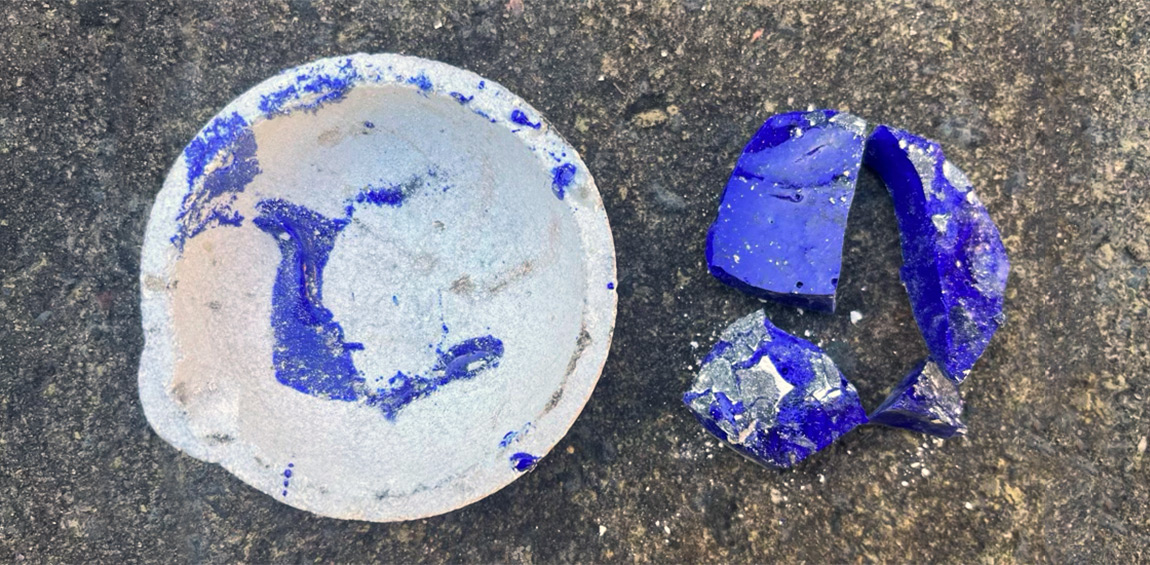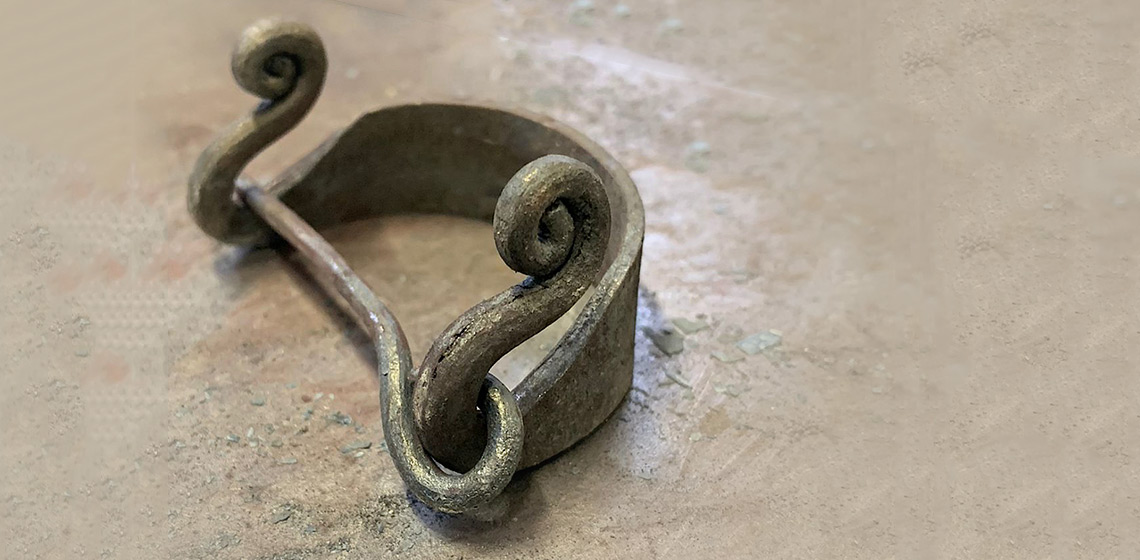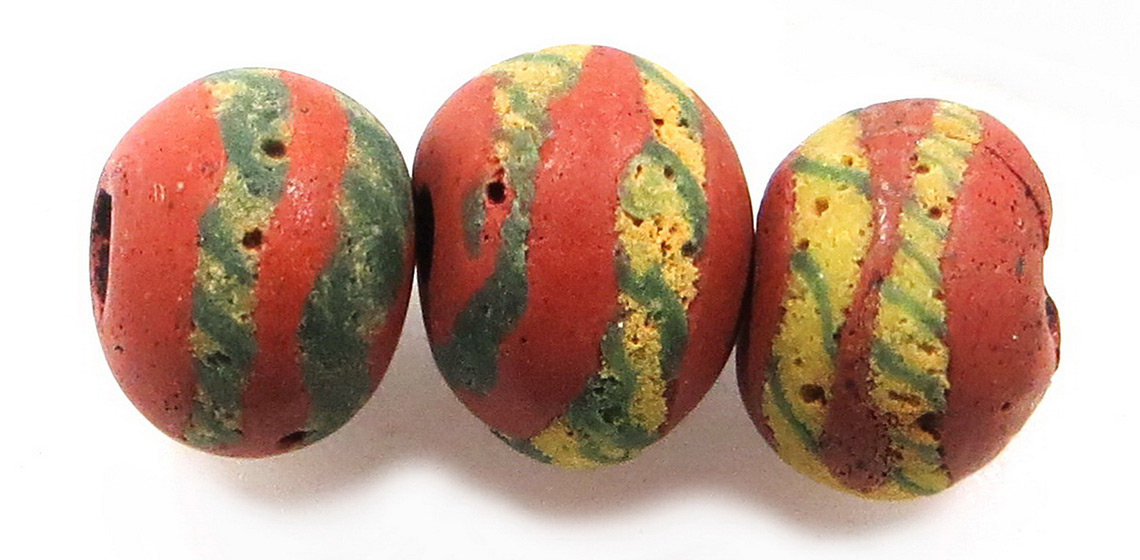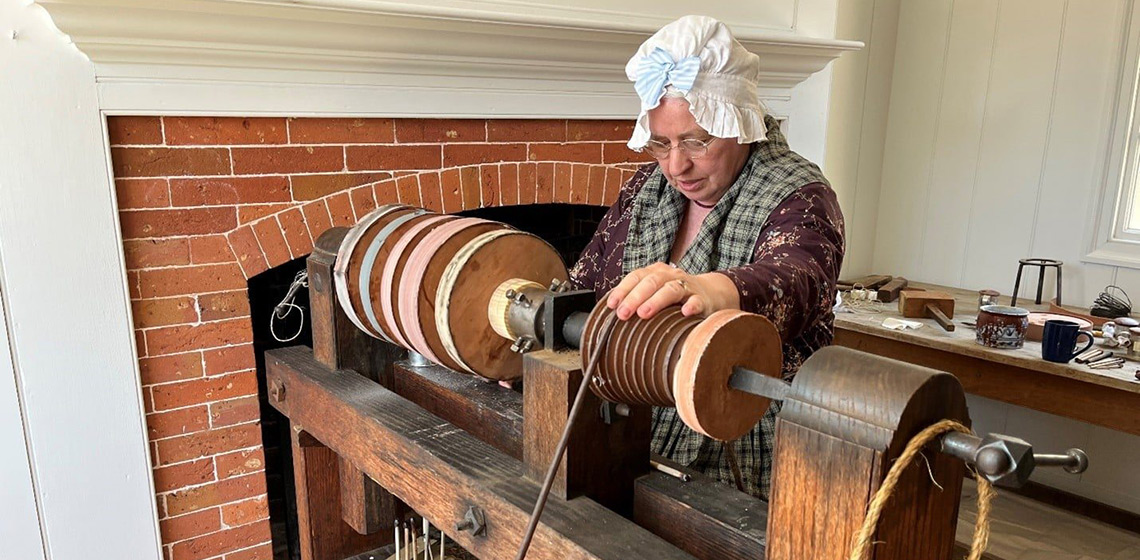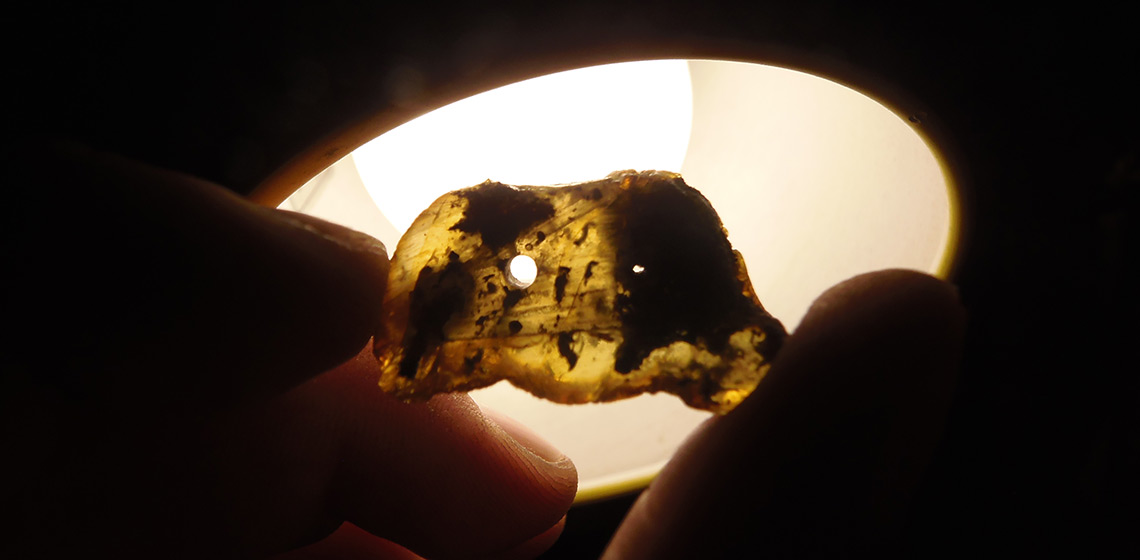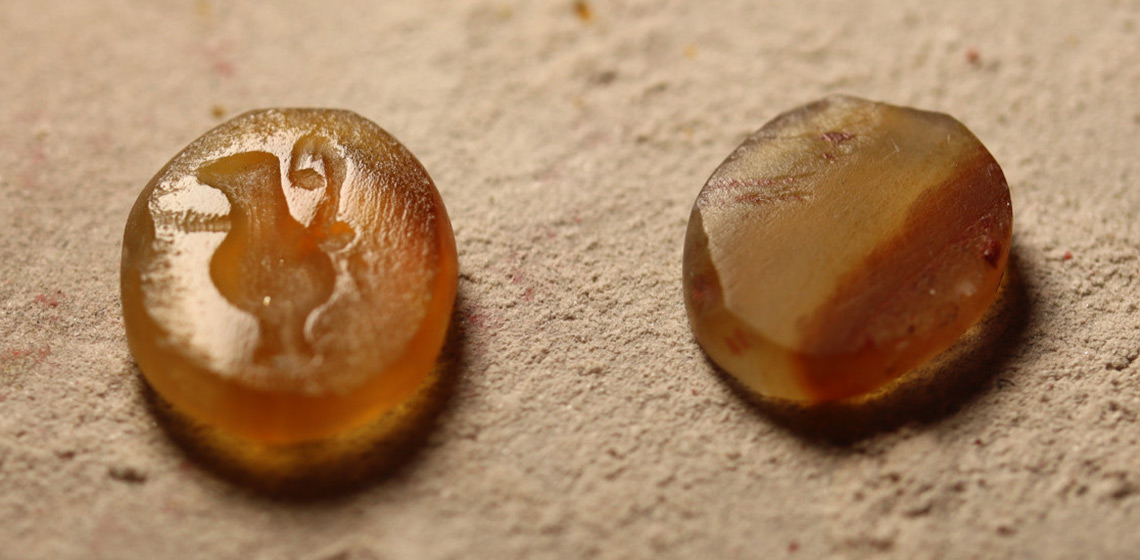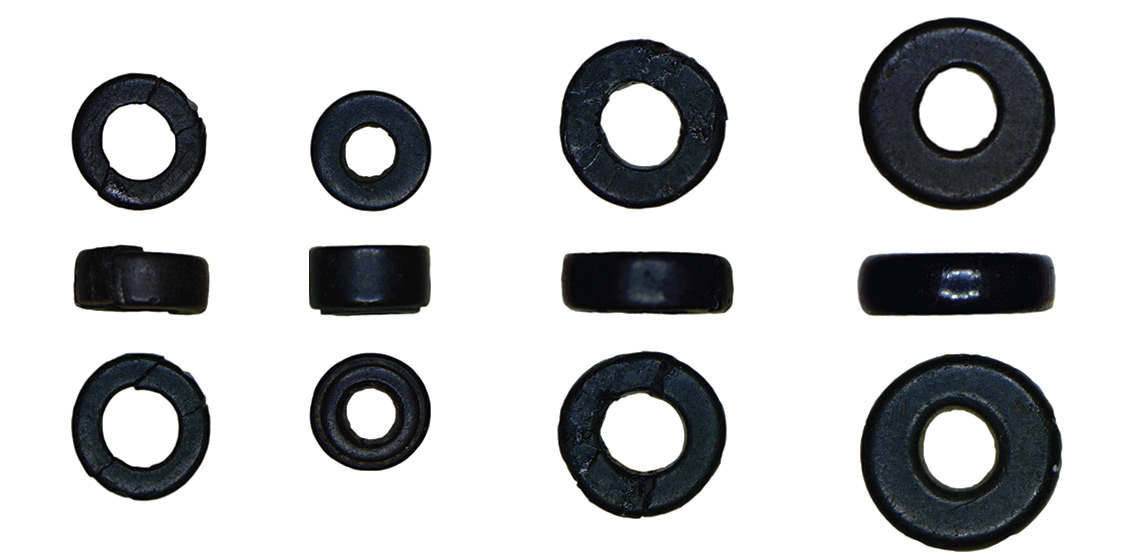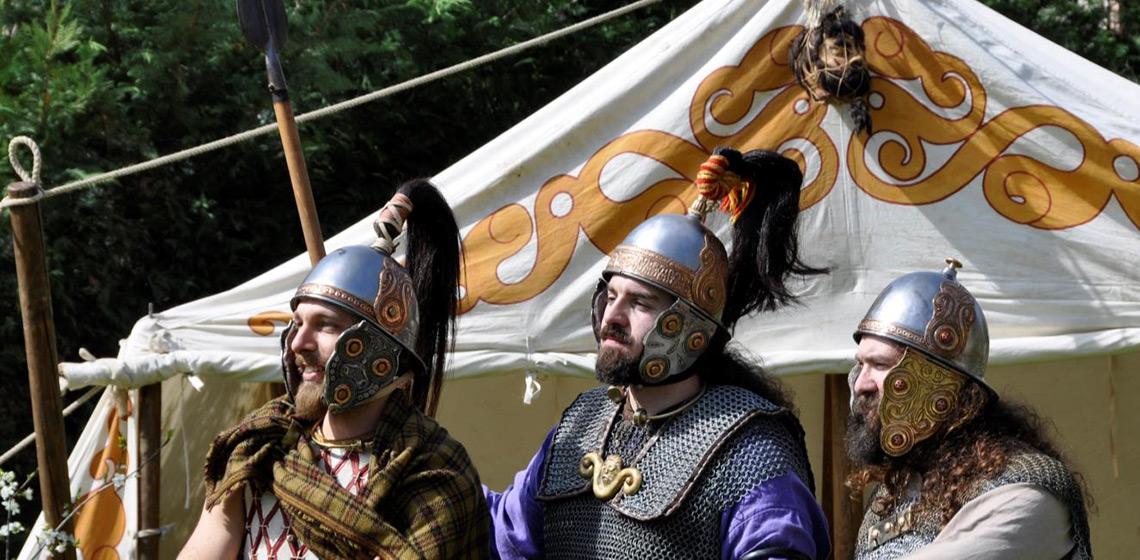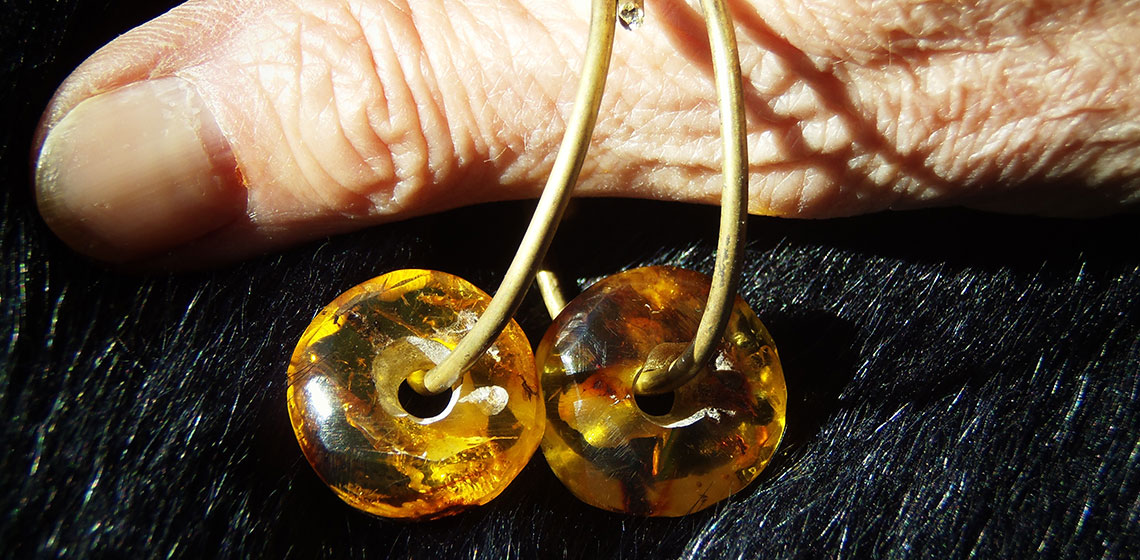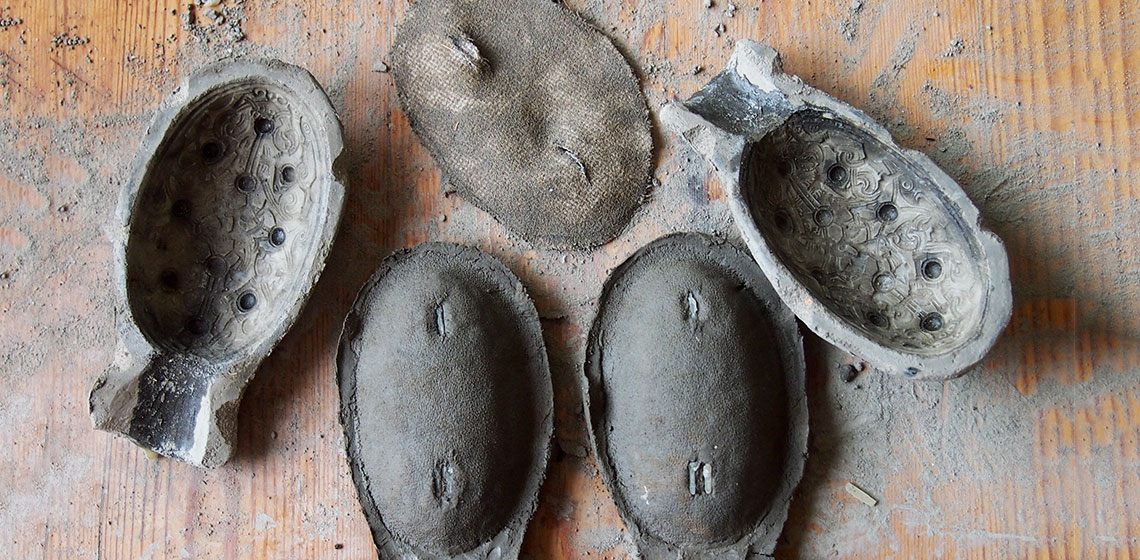jewellery
Jewels Created from Dirt: An Investigation into the Social Context behind Glass Manufacturing in Late Bronze Age Egypt
Publication Date
This study aims to understand the manufacturing process of glass ingots, particularly blue glass, through the use of different furnace types, including electrical and wood-fired furnaces in varying locations. The study also investigates the use of a separator in the manufacturing process, which would allow for the glass ingots to be easily separated from the crucibles. Various materials such as oil, pure lime, and crushed oyster shells are used as a parting layer in the glass crucibles; both the lime and oyster shell layers are successful in separating the ingots from the crucibles after firing...
The Salme Ship Burials
Publication Date
With the help of experimental reproduction of archaeological artefacts, it is possible to study how and from which materials that objects might have been made in the Iron Age. Reproductions are carried out with items such as weapons, accessories, jewellery, buildings, food, ceramics, tools, working methods, and many others...
Anglo-Saxon Beads: Redefining The “Traffic Lights”
Publication Date
Many thousands of glass beads have been excavated from Early British cemeteries of the fifth and sixth centuries AD. Amongst these beads is a type that was particularly common: decorated polychrome beads in red, yellow, and green glass in a variety of styles and combinations. Birte Brugmann, in her 2004 analysis of Saxon-period glass beads (Brugmann, 2004), named these beads “Traffic Light” (TL) beads...
“Cuts Stones of all Sorts, In the Best Manner…”: Experiments in 18th Century lapidary work in America
Publication Date
Unusual or rare gems have been valued for as long as there have been humans to appreciate them. The making of beads and ornaments provides some of the earliest examples of the manipulation of materials solely for aesthetic reasons. Throughout history, we have refined the processes and constructed dedicated machinery to further enhance the desirable qualities of certain stones...
Experiments and Thoughts on Amber Working during the Iron Age
Publication Date
Amber is a fossilized plant resin found in many areas of the world, such as the Baltic Sea coastline, in Central-and South America and, more rarely, in southern Italy.
The following work aims to introduce the reader to some experiments carried out on raw Baltic amber cores, using different techniques and tools with the purpose of verifying how effective these tools can be, and any reaction of the amber...
The Career of an Orange Stone
Publication Date
The analysis of archaeological works of art involves their formal, thematic and interpretative description. The importance of these stages rests in their potential to reveal the biography of an artefact. Research methods investigating the production technology behind an object are a valuable factor extending the field of interpretation of a given object. Each finished work is the result of a creative process...
Techno-functional Study of the Personal Ornaments in Lignite of the Boira Fusca Cave (Cuorgnè, Torino-Italy)
Publication Date
11th EAC Trento 2019
***This paper aims to present a techno-functional study of lignite ornamental objects found during the Fedele excavations (1977-1980) in the Boira Fusca Cave (Cuorgnè, Salto-Turin, Italy). The site demonstrates a chrono-cultural sequence which extends from the late Palaeolithic to the Modern era...
***This paper aims to present a techno-functional study of lignite ornamental objects found during the Fedele excavations (1977-1980) in the Boira Fusca Cave (Cuorgnè, Salto-Turin, Italy). The site demonstrates a chrono-cultural sequence which extends from the late Palaeolithic to the Modern era...
Embossing Technique between III and II Century BC: Experiments and First Results
Publication Date
11th EAC Trento 2019
***The purpose of this paper is to explain our experience with the process of experimental archaeology, involving the reproduction and field testing of embossed decorations, inspired to archaeological finds. As a re-enactment group focused on Celts and Ligurians of III – II century BC we reproduce items and/or ornaments...
***The purpose of this paper is to explain our experience with the process of experimental archaeology, involving the reproduction and field testing of embossed decorations, inspired to archaeological finds. As a re-enactment group focused on Celts and Ligurians of III – II century BC we reproduce items and/or ornaments...
Wives, Queens, Goddesses: Reconstructing the Outfit of a 8th-7th Century BC Picenian Woman
Publication Date
The present work is a reconstruction which was made with two objectives in mind. Thee first was to experiment with heat-treating of amber, a technique already hypothesised by Von Eles (1995), in order to verify possible resin alteration due to heating. Although already tried in the past (Fiorentini, 2018b) after having conducted some cold-working experiments (Fiorentini, 2018a)...
Viking Jewellery Mould Making. Experimental and Reconstructive Aspects
Publication Date
Craftsmanship relies upon the silent knowledge of the skilled experience of the creative workings of the hands, a knowledge that is difficult to convert to written characters without creating a blur of words that make very little sense. Theoretical reasoning lacks the dialogue with, and the resistance from, the raw material. Making up a picture of how wax, clay and metal would behave without practical experience of them is...

